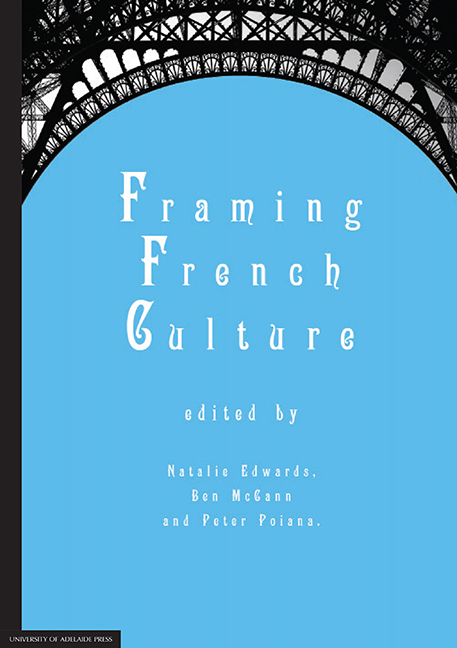Book contents
6 - Framing the Eiffel Tower: From postcards to Postmodernism
from Part 2 - Cultural icons and cinematic framings
Published online by Cambridge University Press: 05 February 2016
Summary
… la Tour attire le sens comme un paratonnerre la foudre; pour tous les amateurs de signification, elle joue un rôle prestigieux, celui d'un signifiant pur, c'est-à-dire d'une forme en laquelle les hommes ne cessent de mettre du sens (qu'ils prélèvent à volonté dans leur savoir, leurs rêves, leur histoire) … Regard, objet, symbole, tel est l'infini circuit des fonctions qui lui permet d'être toujours bien autre chose et bien plus que la Tour Eiffel.
— Roland Barthes.The visual impact, and iconic status, of the Eiffel Tower have long been established. Indeed, it was conceived as both a monumental sight and as a place for viewing, and so its place in visual culture, it might be argued, was a very part of the Tower's conception in 1884, long before a committee had even been formed to select a centerpiece for the 1889 Exposition Universelle. Recent innovations in a range of fields, including cultural geography and visual culture, have led scholars to reflect on what constitutes an urban icon, to question that which is precisely the ‘visual’ in urban culture, and to propose that ‘the Eiffel Tower is actually the original and defining urban icon’. This recent work in visual culture, and on the urban icon, constitutes the latest inquiry in a long lineage of critical reflections on seeing, the panoramic, the spectacular and the semiotics of the image, many of which have profoundly affected our field.
As we might expect, and as we know from other studies, such as those by Jonathan Crary and Maurice Samuels, this line of critical inquiry takes root in the moment of viewing, and in a culture of spectatorship. Indeed, Vanessa Schwartz and Jeannene Przyblyski contend that ‘the very notion of “visual culture” was made possible by many of the changes in image production in the nineteenth century’ — the kind of ‘imageries’, to borrow Philippe Hamon's term, that, they go on to argue, ‘forever altered our connection to such fundamentals as materiality, experience, and truth’. To explore the notion of ‘framing’, then, here I examine some connections between the discourse on the Eiffel Tower at the time of its construction, as well as the ways in which representation of it has developed, alongside the way that the theorising impulses of a number of disciplines in the human sciences, profoundly affected by semiotics, have engendered the discipline of visual culture.
- Type
- Chapter
- Information
- Framing French Culture , pp. 129 - 156Publisher: The University of Adelaide PressPrint publication year: 2015



